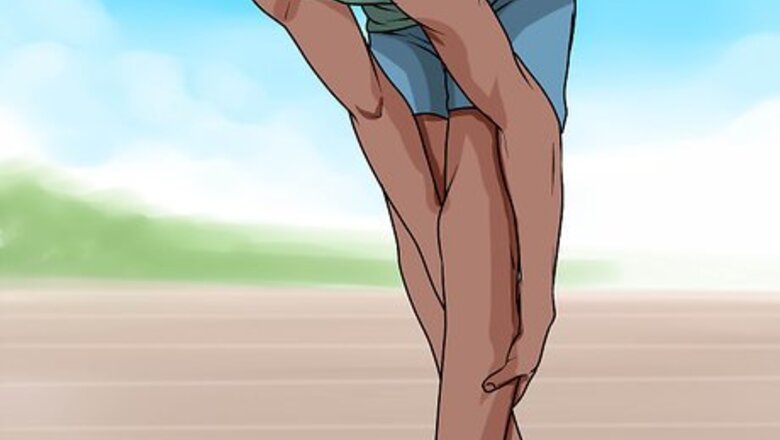
views
- Loosen up around your legs, hips, and waist to make your walk look a little more fluid. To give your hips a more natural sway, slip into some heels.
- Rotate your feet inward as you walk and place your feet in front of one another as you step. To help narrow your stride further, carry your arms closer to your sides.
- Smooth out your stride by slowing your pace a little bit and making your steps a bit smaller.
- Perfect your posture by keeping your shoulders back, putting your chest forward, and standing up straight.
Swaying Your Hips
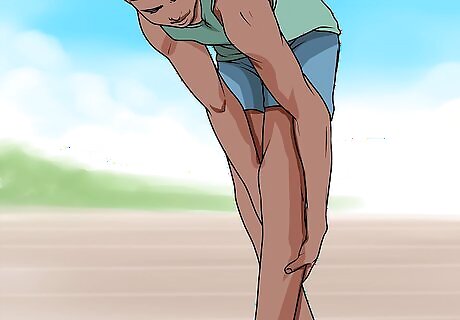
Loosen up your walk. The traditional masculine gait tends to be stiffer and less fluid. Relax your muscles around your hips, legs, and waist. Loosening up can help you begin to swivel your hips. Practice tensing your muscles and then relaxing them. This should help you relax in order to loosen up your walk. Be more fluid in your motions, and refrain from jerking your legs or arms abruptly as you walk.
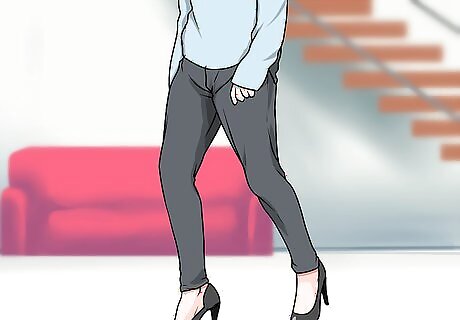
Wear heels. Wearing heels tends to make the hips sway more without your trying. Start with lower, wider heels if you are not used to wearing them. (Try no more than 2-inch heels at first). You can slowly work your way up with time. Don’t try stilettos first—they can be quite daunting to those new to heels. You might want to practice wearing heels at home before you try them out in public.
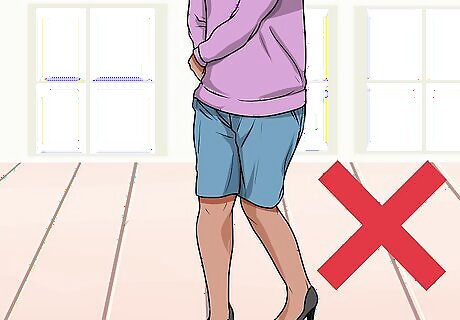
Don’t exaggerate the swing. Unless you're going for high femme (ultra-feminine) movement, you won’t want to exaggerate the swing of your hips. While a lot of women have a natural swing to their step, a lot of girls don’t sway their hips as much as you might think, often because girls aged 7 to 11, don't have the same shaped hips as fully mature women. (The movies tend to portray more than usually feminine walks).
Narrowing Your Stride
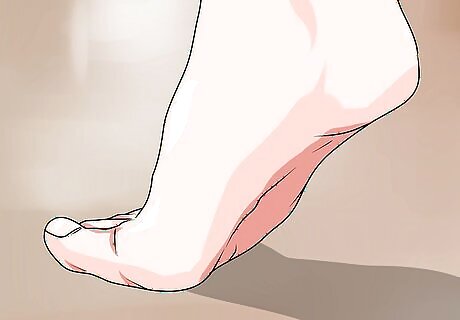
Turn your feet slightly inward. This will have the effect of narrowing your stride somewhat. It will also contrast the traditionally masculine gait, in which men often walk with feet splayed. If you aren’t used to this, it might seem awkward at first. Heels can help with this as well.
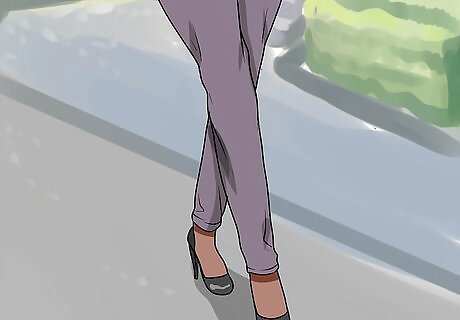
Keep the width of your stride narrow. Turning the feet inward will help to narrow your stride, but you can also consciously narrow it by bringing your foot in front of the other as you walk. You need not go all the way, as this will produce a more catwalk-like walk, than a traditional casual feminine walk.
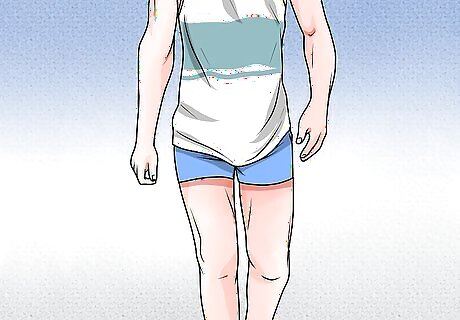
Keep your arms close to your sides. With the traditional masculine gait, arms are often kept wide, not immediately on the hips. While you will still swing your arms as you walk, you would swing them closer to your sides than you are perhaps used to.
Smoothing Your Stride
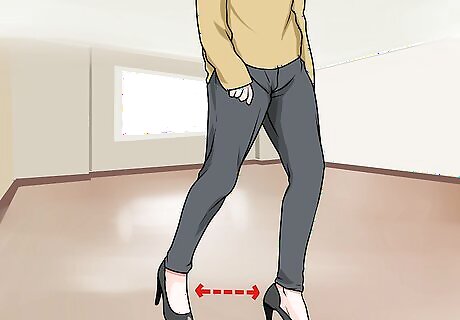
Decrease the distance between steps. Decreasing the distance between steps can help with the sway of your hips and narrowing your stride, as well as smoothing your stride. The traditional masculine gait usually includes wider steps. Consciously (at first) shorten the distance between steps until it feels comfortable. Some people, in some nations consider a long stride, very unfeminine.

Pull your shoulders back. This can help smooth out your stride by helping you move with your lower body rather than your upper body. It will also help you not to plod heavily. Your arms should more easily fall closer to your body with this posture.
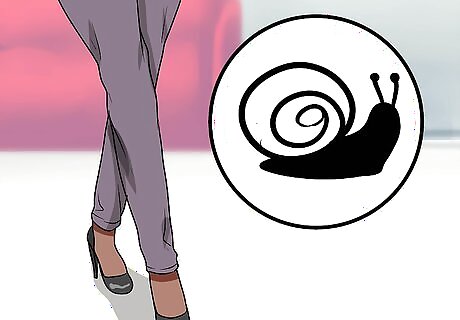
Walk at a slower pace. Walking at a slower pace can help you focus on adding a fluidity to your movement. You’ll want the pace to still be a reasonable one or you’ll look like you’re struggling in your heels (you might well be). The slower movement will also keep you from appearing as stiff as you walk.
Working on Your Posture

Stand up straight. Standing up straight can be either feminine or masculine, but in order to put all the steps together confidently for a traditional girl's walk, you need to stand straight as you walk. Align your head above your heart, and this may help you feel confident and feminine as you stand up straight.
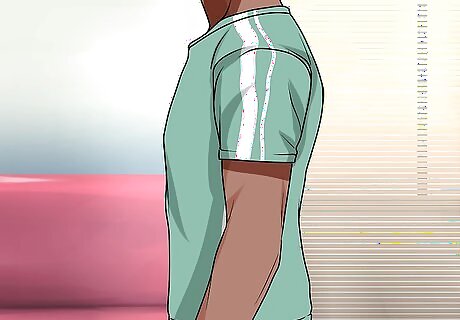
Put your shoulders back. Traditionally, men tend to carry their shoulders more parallel to their bodies than women. Standing straight with your shoulders back, helps you sway your arms around your hips and create a more traditionally feminine walk.
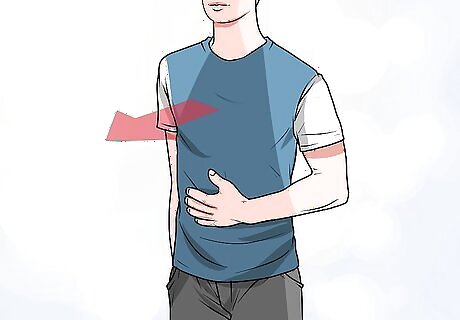
Put your chest forward. Putting your chest forward can be daunting if you don't feel confident about it, but it will likely make you feel confident once you do. This again will help with the walk by helping you sway your arms in a more traditionally feminine manner.
Practicing Your Walk
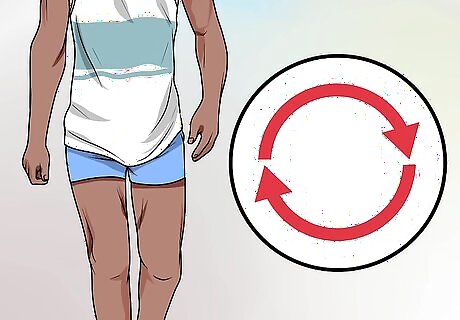
Set aside time to practice. If you want to improve your girl-walk, you'll want to practice. No one, not even models or actors, are born with the gait they have. They learn it like nearly everyone else, through practice and watching other people. Once you feel like you've got it down, then you should be able stride confidently in public.

Ask a friend for help. If you have a friend you trust, you can ask them to help you get the walk right. It's even more helpful if they already know the walk themselves, but anyone you trust can help, by giving you feedback on the way it looks. Make sure you can trust the friend to be nonjudgmental, especially if you're trans or non-binary. You might want to vet them before asking for their help. You could say, "So, as you know, I've been transitioning, and I was thinking of working on my walk." If they react negatively, you may need to find another friend. Finding a community and grounding yourself in a supportive community is one of the biggest ways to take care of yourself while coming out. It is essential to find core sources of support, acceptance, and love during the coming out process. The process can be long as it can take years to explore the identity and the person you are coming out as.
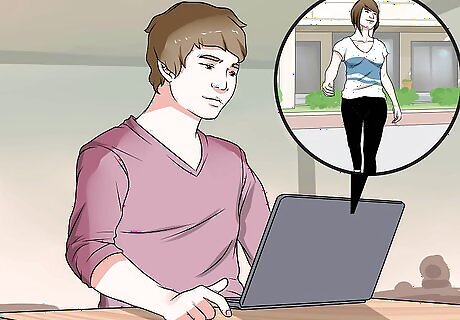
Record yourself or use a mirror. If you don't feel able to confide in a friend, or you would rather just work alone, you can record yourself with your phone or other camera or use a mirror. This way you can see what you look like and compare it to what you want it to look like. You can watch movies or videos of women walking online (there are tutorial videos for walking like a girl), but any movie from Hollywood is likely to contain an exaggerated feminine walk. You may want to go to YouTube or indie films for a broader variety of feminine gaits.
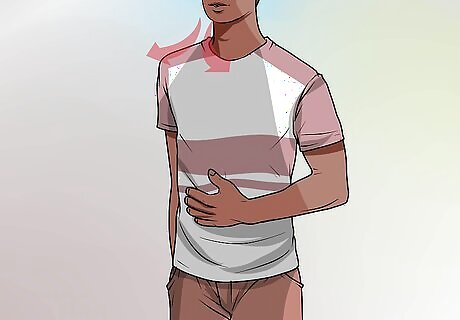
Relax. In order to get the walk to where you want it, you'll need to relax. Remember to breathe as you walk. If it helps, try breathing into each step you take. If you're dealing with negative thoughts about your attempts, find a mantra to say back to those thoughts, such as, "I'm learning and no one gets it right the first time," or "I choose my walk, and no one else."




















Comments
0 comment